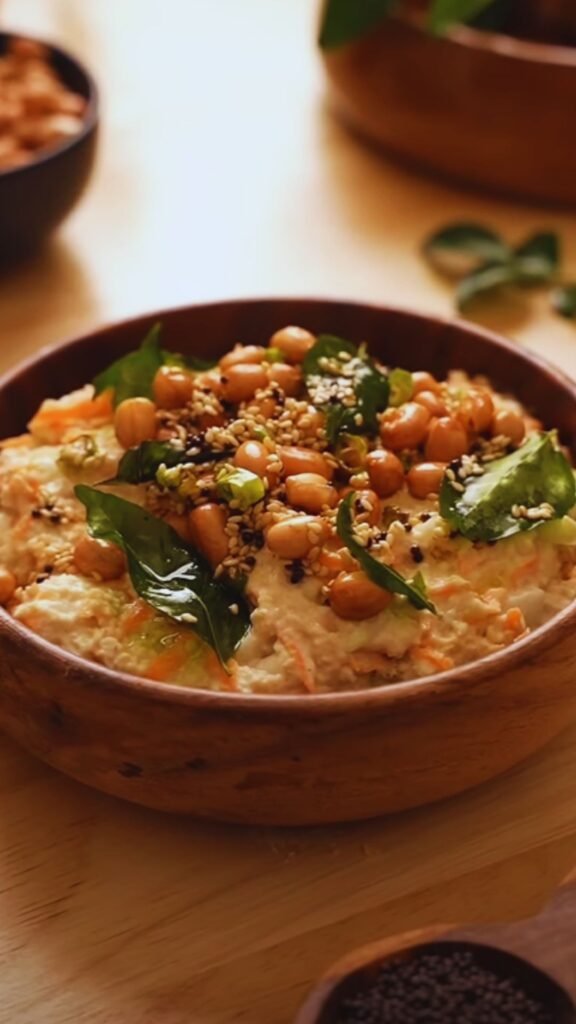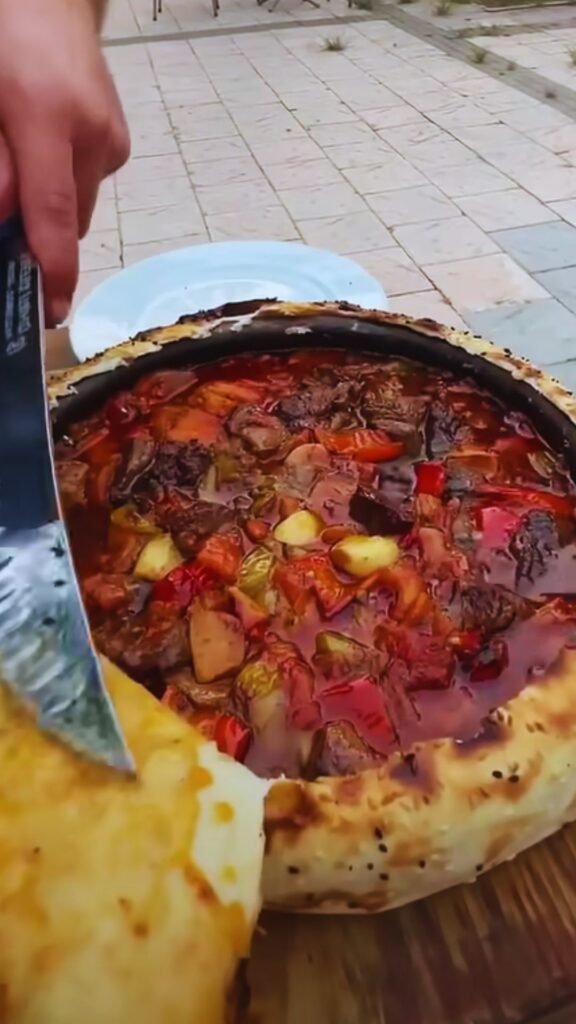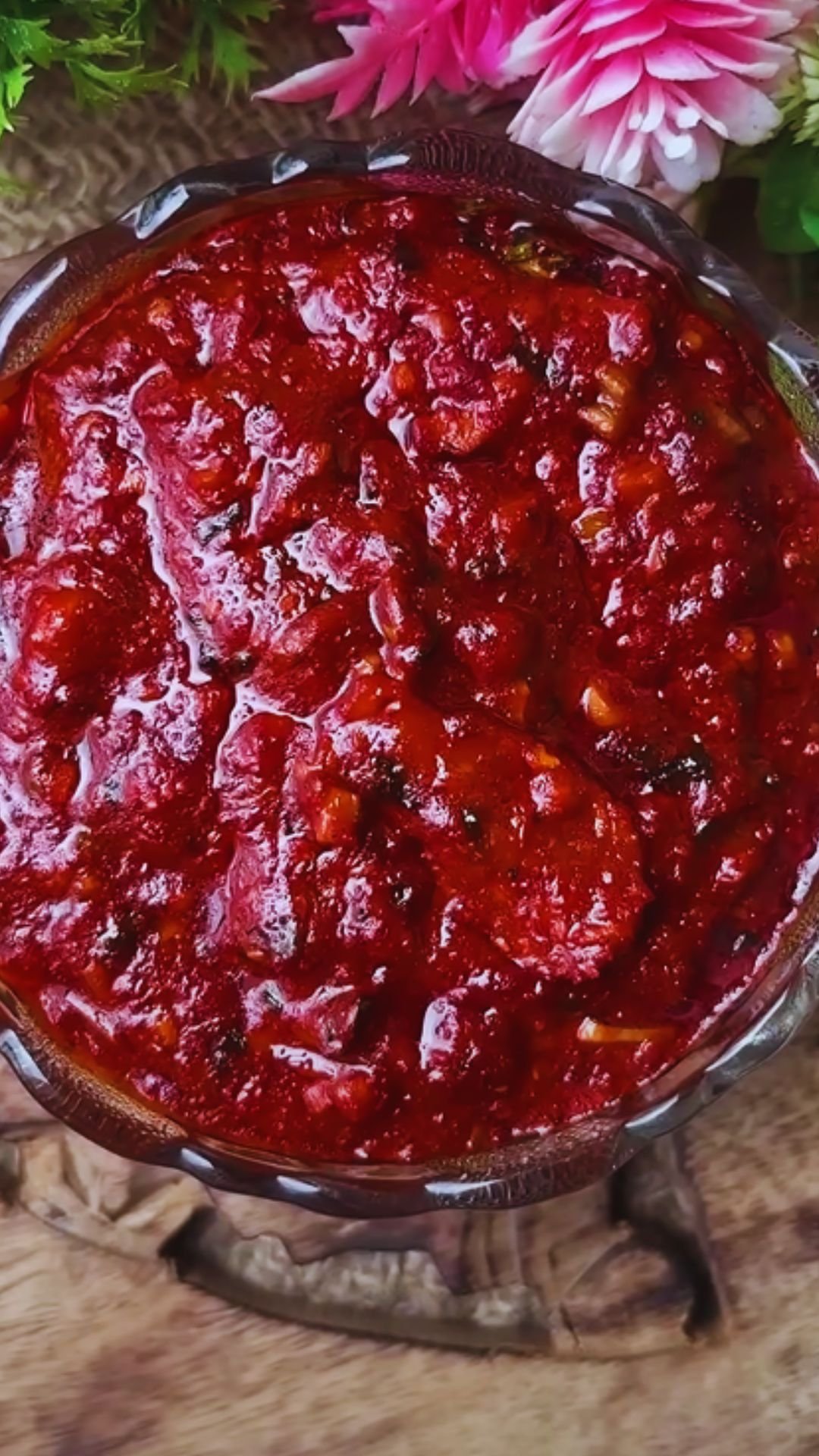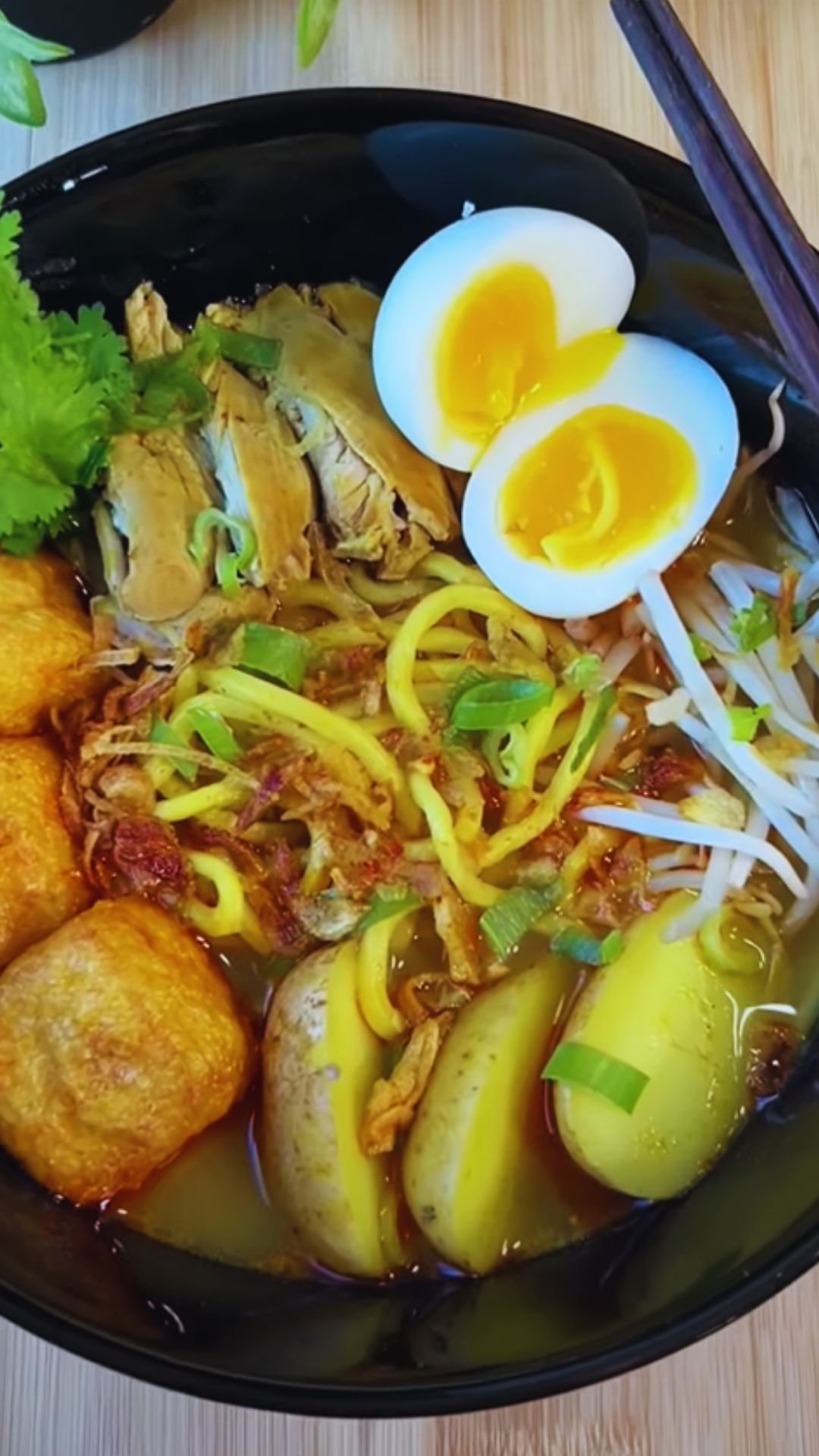I still remember scrolling through my feed when I spotted it – a creamy, luxurious bowl of risotto that looked like it belonged in a high-end Italian restaurant. The way the rice glistened, how the parmesan melted perfectly into each grain, and that sprinkle of fresh herbs on top… I couldn’t stop staring. Despite hearing for years how “difficult” and “time-consuming” risotto supposedly was, something about this particular image made me think, “I need to try making this – tonight.”
That spontaneous decision changed my weeknight dinner routine forever. What I discovered wasn’t just a delicious meal but a transformative cooking experience that’s now become a staple in my home. This Creamy Garlic Parmesan Risotto isn’t just food – it’s comfort in a bowl, an impressive dish that feels special yet is surprisingly manageable, even on busy weeknights.
The Magic Behind Perfect Risotto
Before diving into this recipe, I had all the common misconceptions about risotto. I thought it required constant, uninterrupted stirring for 45+ minutes. I was convinced it needed specialty ingredients I’d never use again. I imagined it would fall flat without restaurant-grade equipment.
I was wrong on all counts.
The truth about risotto is much simpler: it’s about understanding a few key principles and having a little patience. The magic happens in the slow release of starch from the rice, creating that signature creamy texture without actually using cream (though we’ll add some for extra richness in this recipe).
Why This Recipe Works
What makes this particular risotto recipe my go-to comfort food? Let me count the ways:
- Minimal ingredients that pack maximum flavor
- Foolproof technique that delivers consistent results
- Versatile base that can be customized endless ways
- Make-ahead friendly components that save time
- Restaurant-quality results without specialized equipment
Most importantly, this recipe taught me that stirring risotto isn’t the chore cooking shows make it out to be – it’s actually therapeutic. Those 20-25 minutes of gentle stirring have become my favorite way to decompress after a long day while creating something truly special for dinner.
Ingredients You’ll Need
Here’s everything you’ll need to recreate this life-changing risotto:
| Ingredient | Amount | Notes |
|---|---|---|
| Arborio rice | 1½ cups | Carnaroli or Vialone Nano work too |
| Low-sodium chicken broth | 5-6 cups | Vegetable broth works for vegetarian version |
| Dry white wine | ½ cup | Sauvignon Blanc or Pinot Grigio work well |
| Shallots | 2 medium | Finely diced (about ½ cup) |
| Garlic | 4-5 cloves | Minced fresh garlic, not pre-packaged |
| Unsalted butter | 4 tablespoons | Divided (2 tbsp for cooking, 2 tbsp for finishing) |
| Olive oil | 2 tablespoons | Extra virgin preferred |
| Parmesan cheese | 1 cup | Freshly grated, plus more for serving |
| Heavy cream | ¼ cup | Optional, but adds incredible richness |
| Fresh thyme | 2 teaspoons | Leaves only, plus more for garnish |
| Lemon zest | 1 teaspoon | From organic lemon if possible |
| Salt | To taste | Start with ½ teaspoon and adjust |
| Black pepper | To taste | Freshly ground is best |
| Frozen peas | ½ cup | Optional, add for color and sweetness |
Essential Equipment
Don’t worry – no special equipment needed! Here’s what I use:
| Equipment | Why It’s Important |
|---|---|
| Wide, heavy-bottomed pot | Provides even heating and enough surface area for proper evaporation |
| Wooden spoon | Gentle on the rice grains and prevents scratching your cookware |
| Ladle | Makes adding broth in increments much easier |
| Measuring cups | For proper liquid-to-rice ratio |
| Small saucepan | To keep broth warm throughout cooking |
The Step-by-Step Process

Preparation Steps (10 minutes)
- Warm your broth: Pour all broth into a saucepan and keep it at a low simmer on a back burner. Warm broth is crucial for maintaining the cooking temperature of the risotto.
- Prep your workspace: Have all ingredients measured and ready to go beside your cooking area – risotto waits for no one once you start!
- Grate the cheese: Freshly grate your Parmesan rather than using pre-packaged. The difference in meltability and flavor is truly night and day.
Cooking Process (25-30 minutes)
- Build the flavor base: In your wide pot over medium heat, warm 2 tablespoons butter and olive oil. Add the diced shallots and cook until translucent, about 3-4 minutes. Add minced garlic and cook for another 30 seconds until fragrant.
- Toast the rice: Add the Arborio rice to the pot and stir to coat each grain with the butter-oil mixture. Cook for 2-3 minutes, stirring frequently, until the edges of the rice grains become translucent but the centers remain white. This crucial step creates a protective coating that helps the rice release starch slowly.
- Deglaze with wine: Pour in the white wine and stir constantly until almost completely absorbed, about 2 minutes. You’ll know it’s time for the next step when you can drag your spoon through the rice and it leaves a clear path momentarily before filling in.
- Begin the broth additions: Using your ladle, add about ¾ cup of warm broth to the rice. Stir gently but consistently until the liquid is mostly absorbed before adding the next ladle.
- Find your rhythm: Continue adding broth one ladle at a time, stirring until each addition is absorbed before adding the next. This should take about 18-22 minutes total. The key is maintaining a gentle simmer – not too hot, not too cool.
- Test for doneness: Around the 18-minute mark, start tasting the rice. Perfect risotto should be al dente – tender but with a slight firmness in the center of each grain. It should never be mushy or crunchy.
- Add the enrichments: When the rice is just shy of your desired tenderness, stir in the remaining 2 tablespoons of butter, heavy cream if using, Parmesan cheese, thyme leaves, lemon zest, and frozen peas (if using).
- Rest briefly: Remove from heat, cover, and let stand for 2 minutes. This allows the rice to relax and the flavors to meld.
- Final adjustments: Uncover and check consistency – proper risotto should slowly spread when placed on a plate, not stand up like mashed potatoes or run like soup. Add a splash more broth if needed, and adjust salt and pepper to taste.

Common Problems & How to Fix Them
When I first started making risotto, I encountered a few hiccups. Here’s how to avoid them:
| Problem | Cause | Solution |
|---|---|---|
| Rice still crunchy but liquid absorbed | Heat too high or not enough liquid | Lower heat and add more warm broth, ¼ cup at a time |
| Too soupy | Too much liquid or undercooked rice | Continue cooking uncovered until excess liquid evaporates |
| Gluey texture | Stirred too vigorously or used wrong rice | Stir gently next time and ensure you’re using proper risotto rice |
| Bland flavor | Insufficient seasoning | Add more salt, freshly ground pepper, and extra Parmesan |
| Burns on bottom of pan | Heat too high | Lower heat immediately and don’t scrape burned bits into the risotto |
Serving Suggestions
My favorite way to serve this risotto is in warmed shallow bowls that showcase its beautiful creamy consistency. Here’s how I make it special:
- Fresh herbs: A sprinkle of additional fresh thyme or some chopped Italian parsley adds color and freshness
- Extra cheese: Offer additional freshly grated Parmesan at the table
- Finishing oil: A light drizzle of high-quality extra virgin olive oil adds luxurious richness
- Cracked pepper: Fresh cracked black pepper adds visual appeal and flavor complexity
- Accompaniments: A simple arugula salad with lemon vinaigrette makes the perfect side

Make-Ahead and Storage Tips
One of the reasons this risotto has become a weeknight staple for me is how well portions of the process can be prepared ahead:
Make-Ahead Options:
- Broth infusion: Add aromatics (garlic peels, herb stems, etc.) to your broth and simmer it the day before, then strain and refrigerate
- Shallot & garlic prep: These can be chopped and stored in an airtight container in the fridge for up to 2 days
- Partial cooking: You can par-cook the risotto until it’s about halfway done, then spread on a baking sheet to cool quickly, refrigerate, and finish cooking the next day
Storage Solutions:
- Refrigeration: Leftover risotto will keep in an airtight container for 3-4 days
- Reheating: Add a splash of broth when reheating to restore creaminess
- Repurposing: Cold leftover risotto makes amazing arancini (fried risotto balls)
Variations to Try
Once you master the basic technique, the possibilities for customization are endless! Here are some of my favorite variations:
| Variation | Key Additions | Adjustments |
|---|---|---|
| Mushroom Risotto | 8 oz sautéed mushrooms | Add mushrooms when rice is halfway cooked |
| Lemon Asparagus | 1 bunch blanched asparagus, extra lemon zest | Add asparagus in final 5 minutes |
| Butternut Squash | 1 cup roasted squash cubes, pinch of nutmeg | Fold in squash at the end |
| Seafood Risotto | 8 oz cooked shrimp or scallops | Use seafood stock and add cooked seafood at end |
| Spring Vegetable | Peas, asparagus tips, fava beans | Add blanched vegetables in last 3 minutes |
| Wild Mushroom & Truffle | Mixed wild mushrooms, truffle oil | Finish with a few drops of truffle oil |
Frequently Asked Questions
Q: Do I really need to use Arborio rice? Can I substitute regular rice?
While technically you can make a risotto-style dish with other rice varieties, true risotto requires a high-starch, short-grain rice like Arborio, Carnaroli, or Vialone Nano. These varieties release starch slowly, creating that signature creamy texture without becoming mushy. Regular long-grain rice simply won’t deliver the same results.
Q: Is it really necessary to add the broth gradually? Can’t I just add it all at once?
Adding broth gradually is essential to proper risotto technique. Each addition of liquid helps release starch from the rice grains while allowing some evaporation, which concentrates flavor. Adding all the liquid at once would essentially steam the rice rather than create the creamy emulsion that defines risotto.
Q: I don’t have white wine. Can I skip it?
Yes, you can skip the wine, but it does add a depth of flavor and acidity that balances the richness. If omitting, replace with an equal amount of broth and add a teaspoon of lemon juice or white wine vinegar to mimic the acidity.
Q: How do I know when the risotto is done?
Perfect risotto should be al dente – tender but with a slight resistance when bitten. The overall texture should be creamy and flowing, not stiff. When you drag a spoon through it, the risotto should slowly flow back to fill the space.
Q: My risotto never seems creamy enough. What am I doing wrong?
Several factors affect creaminess: using the correct rice variety, maintaining proper heat (a gentle simmer, never boiling), stirring regularly to release starch, and ensuring your rice-to-liquid ratio is correct. Adding butter and cheese at the end also significantly enhances creaminess.
Q: Can I make risotto in advance for a dinner party?
Yes! You can par-cook the risotto until it’s about 75% done (about 15 minutes into the cooking process), then spread it on a baking sheet to cool quickly. Refrigerate until needed, then finish cooking with hot broth just before serving.
Why This Dish Has Become My Weeknight Staple
What started as an impulse attempt to recreate a beautiful dish I saw online has become one of the most satisfying recipes in my regular rotation. Here’s why I find myself making this risotto again and again:
The process has become meditative for me – those 25 minutes of rhythmic stirring help me transition from workday to evening, forcing me to slow down and be present. There’s something deeply satisfying about watching plain rice transform into something so luxurious through such a simple process.
The versatility means I can adapt it to whatever ingredients I have on hand. Leftover roasted vegetables? Toss them in. Bits of cheese in the fridge? They melt beautifully into the creamy base.
Most importantly, this dish never fails to impress, whether I’m serving just myself on a Tuesday night or hosting friends for dinner. It’s comforting yet sophisticated, familiar yet special.
I never imagined that a dish I first tried on a whim would become such a cornerstone of my cooking repertoire, but that’s the magic of this risotto. It teaches patience, rewards attention, and delivers consistent happiness in a bowl. I hope you’ll give it a try and discover why this simple Italian classic might just become your new favorite too.
Final Tips for Risotto Success
- Temperature matters: Keep your broth hot and your risotto at a gentle simmer
- Don’t rush: The gradual addition of liquid is what creates the creamy texture
- Trust your senses: Use timing as a guide but let appearance and taste be your true indicators
- Embrace imperfection: Even if your first attempt isn’t restaurant-quality, it will still be delicious
- Make it your own: Once you understand the technique, customize with your favorite flavors
If there’s one dish worth mastering in your culinary journey, it’s this one. From that first mesmerizing photo to countless delicious dinners later, this creamy garlic Parmesan risotto continues to bring joy to my table – and I’m confident it will do the same for yours.
Q&A Section
Q: How can I make this recipe dairy-free?
You can substitute the butter with a good quality olive oil and either omit the Parmesan or use a dairy-free alternative. Nutritional yeast can provide a somewhat similar umami flavor, though the texture will be different. To replace the creaminess from heavy cream, try adding a few tablespoons of full-fat coconut milk.
Q: My family doesn’t like wine in cooking. What’s the best substitute?
For the most similar flavor profile, use white grape juice with a tablespoon of white wine vinegar. Alternatively, you can simply use additional broth with a squeeze of lemon juice to add acidity.
Q: Can I make this in an Instant Pot or pressure cooker?
While traditional risotto requires the gradual addition of liquid, you can make a decent version in a pressure cooker. Add all broth at once and cook on high pressure for 5-6 minutes, then naturally release for 5 minutes before manually releasing remaining pressure. The texture won’t be identical, but it’s a good option when time is limited.
Q: What’s the best way to reheat leftover risotto?
Gently reheat in a saucepan over medium-low heat, adding a splash of warm broth or water to loosen the texture. Stir frequently until heated through. Avoid microwave reheating if possible, as it can make the texture uneven.
Q: Can I freeze risotto?
While you can freeze risotto, the texture does change somewhat upon thawing. If you do freeze it, portion it into airtight containers and use within 1-2 months. Thaw overnight in the refrigerator, then reheat with additional liquid to restore creaminess.
Q: What other grains can I use to make a risotto-style dish?
While not traditional risotto, you can apply similar techniques to other grains. Try pearl barley, farro, or steel-cut oats for interesting variations. These will have different cooking times and liquid requirements, so be prepared to adjust accordingly.
Q: I’m watching my sodium intake. How can I reduce the salt in this recipe?
Use unsalted broth and adjust seasoning with herbs instead. Lemon zest, fresh herbs, and a touch of nutritional yeast can add flavor without sodium. If using Parmesan, note that it’s naturally salty, so you may not need to add any additional salt.
Q: How can I add protein to make this a complete meal?
Stir in cooked chicken, shrimp, or scallops in the last few minutes of cooking. For vegetarian options, white beans or edamame work well. You could also top the finished risotto with a poached egg for added richness and protein.



